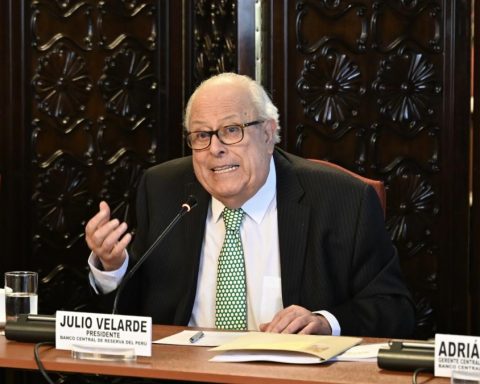Investors ignored him, keeping bets on one more rate hike and betting further that rates will be lower by the end of the year than they are now.
It’s unclear which view will be correct: Neither the Fed nor the markets have a great track record of predicting since the central bank launched the current round of rate hikes last March.
Markets have had to repeatedly dismiss bets on a quick turnaround, dashing those expectations as the central bank went ahead with the most aggressive tightening in 40 years.
For their part, those responsible for monetary policy at the Federal Reserve increased their own estimates for the rise in interest rates every quarter of last year as inflation turned out to be stronger and more solid than expected. Not once did they signal that rates would be cut this year.
How the current disconnect is resolved will largely depend on whether inflation falls faster than the central bank expects or labor markets soften more than expected.
“The actual outcome depends on the data, and we won’t have any data to confirm or disprove it…until we get into the first half of the year,” said Tim Duy, chief US economist at SGH Macro Advisors.
And as long as that uncertainty exists, Powell is interested in trying to prevent financial markets from betting too heavily on rate cuts that would ease financial conditions, potentially undermining the Fed’s hard-earned gains against inflation.
Even simply acknowledging the possibility of a rate cut later in the year could undo some of the Fed’s job, forcing more central bank tightening and making it even more difficult to avoid a recession.
Hence Powell’s repeated assertions about not cutting rates, and indeed the need to push them at least above 5%, as policymakers predicted in December.
“In our judgment, we are not yet in a tight enough policy position, and so we say we expect continued hikes to be appropriate,” Powell said.
But so far, said Megan Greene, chief global economist at the Kroll Institute, “the markets are not buying what the Fed is selling.”
The central bank’s benchmark interest rate for overnight loans is now between 4.50% and 4.75%. Interest rate futures traders forecast a further 25 basis point rise in March, before the Federal Reserve pauses to assess how much the rise in interest rates from near zero a year ago is slowing the economy. .
They expect rate cuts to begin in September, a view that Powell said on Wednesday is driven by the expectation of a rapid decline in inflation.
Either cutting back in September or waiting until next year, it would be in the historic range. Since the 1990s, the interval between rate hikes and rate declines has varied from 18 months in 1997-1998 to five months in 1995.
In the last three months, the inflation trend has been positive. By the Federal Reserve’s preferred measure, inflation now stands at 5.0% a year, more than double the central bank’s 2% target, but below the 7% peak reached last summer.
Wage pressures are also easing, which could allow the Federal Reserve to cut rates later this year as it tries to achieve a “soft landing,” in which inflation falls without seriously hurting economic growth and jobs.
The Federal Reserve is also wary of smoothing inflation and cutting rates too soon. Powell and others point to the Fed’s last great war on inflation, in the late 1970s and early 1980s, as a cautionary tale.
“Investors are inviting him to be Arthur Burns, and he doesn’t want to accept that invitation,” said Vincent Reinhart, chief economist at Dreyfus and Mellon.
It was during the Burns presidency, in the 1970s, that the Fed repeatedly raised rates and then cut them to fight rising unemployment, only for prices to explode again, forcing more rate hikes. His successor, Paul Volcker, ended up raising rates to nearly 20% to stamp out the inflation Burns had let get out of hand.
The Fed, Powell said Wednesday, cannot risk doing too little. “We have no incentive or desire to push too hard, but if we feel we’ve gone too far … if inflation is coming down faster than we expect, then we have tools that would work on that,” he said.
Then there’s the thorny issue of financial conditions, an indicator of how easy it is to access credit and one that the Federal Reserve watches closely to see how tight borrowing costs really are.
Financial conditions began to ease following the central bank’s monetary policy meeting last November, and while Powell largely sidestepped these concerns on Wednesday, the Federal Reserve cannot afford to ease them further.
“This easing of financial conditions is certainly not what the Fed intended, and we expect a cacophony of Fed speech in the coming weeks to refocus the Fed’s message,” said Gregory Daco, chief economist. from EY Parthenon.
With information from Reuters













